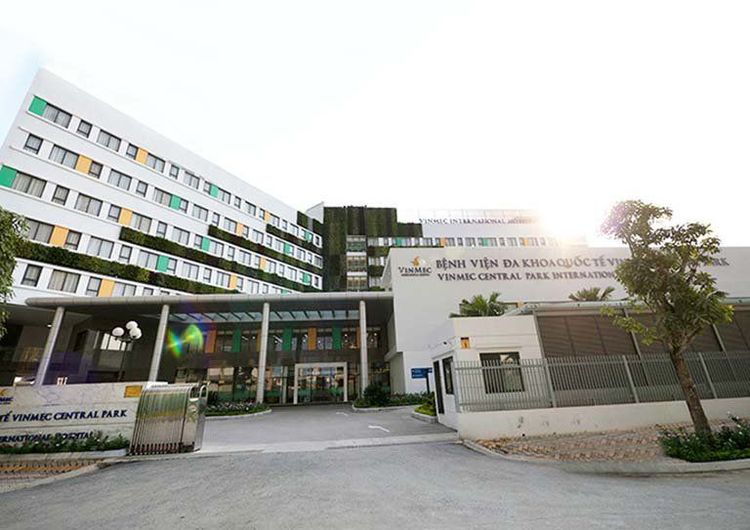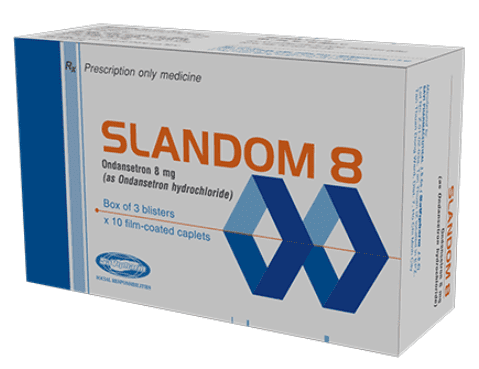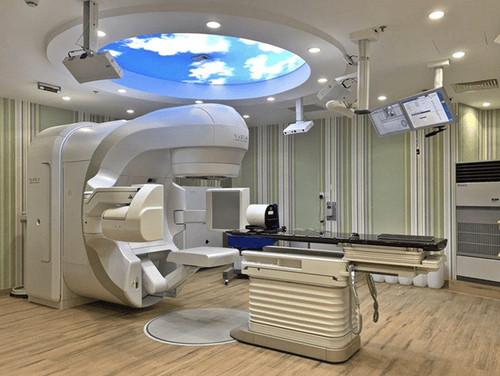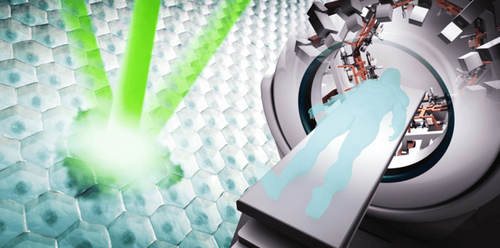This is an automatically translated article.
The article was professionally consulted by doctors working at Oncology Center, Vinmec Central Park International General Hospital.Treatment of brain metastatic cancer by brain radiosurgery (STEREOTACTIC RADIOSURGERY - SRS) at Vinmec Central Park Hospital is a completely new technique in Vietnam. This technique has only been applied at the world's leading radiation therapy centers for about 10 years now. This is considered the most modern brain radiotherapy technique in Southeast Asia today.
1. Treatment methods for metastatic brain cancer
Brain metastasis (also known as metastatic brain tumor) is the secondary spread of an original tumor to the brain, which is different from the primary brain tumor. It is estimated that about 8-10% of cancer patients will have brain metastases, of which lung cancer, breast cancer and malignant melanoma most often metastasize to the brain. Metastatic brain tumor is the most common brain tumor in adults today. Approximately 40% of brain metastases are unifocal and the remaining 60% are multifocal.Currently, the survival prognosis of cancer patients is increasingly improved thanks to new cancer drugs such as targeted therapy or immunotherapy. However, the rate of brain metastasis is increased compared to other types of metastasis, because the brain is the last refuge for cancer cells or in other words, drugs do not penetrate the blood-brain barrier.

Hình ảnh ung thư não di căn
The best treatment for a patient with metastatic brain cancer will depend on the size, number, and location of the tumor, as well as the signs and symptoms, general health, and wishes of the patient. . Among them, the main methods include:
Medical treatment: Using high-dose corticosteroids to reduce swelling and edema around the tumor and reduce neurological signs and symptoms. However, this is only a temporary solution in cases where the patient's condition cannot tolerate interventions such as surgery or radiation therapy.
Surgery: Surgery is an option when the metastases are unifocal and the metastatic brain tumor is in an accessible location during surgery, the surgeon will cut to remove as much of the cancer as possible. The advantage of surgery is that the resection of the tumor can quickly help the patient recover neurological symptoms or help the cerebrospinal fluid caused by the tumor to obstruct the circulation. However, surgical removal of brain metastases also carries risks such as nerve paralysis, infection, and bleeding. Other risks may depend on damage to the adjacent part of the brain where the tumor is located. For example, surgery for a tumor located near a nerve that connects to the eye can carry a risk of vision loss. In addition, after surgery also need the support of whole brain radiation therapy to reduce recurrence. Radiation therapy: Radiation therapy is the use of high-energy beams such as ionizing radiation to kill cancer cells. For metastatic brain tumors, treatment may include one or both of two types of radiation therapy: whole brain radiation therapy or high-dose SRS focused radiation therapy. Whole brain radiation therapy has been used for decades for multifocal or inoperable brain metastases. This method can reduce the tumor by 25-50%, improve symptoms but cannot increase the patient's survival.
SRS radiation therapy is a great advancement of radiotherapy machinery and technology, which can increase the dose very high to the tumor with the most accuracy to control the tumor while also increasing the patient's survival. Research results show that SRS radiation therapy can cause tumor reduction response to 70-90% and increase survival time about 15 months compared to whole brain radiation therapy only 5 months.
Today, treatment of brain metastases with SRS brain radiosurgery is a new technique applied at the world's leading radiation therapy centers
SRS brain radiosurgery is a method that uses multiple beams of non-invasive radiation. too strong. But the radiation receiving point concentrated at the brain tumor will receive a very large dose of radiation to kill the cancer cells. SRS brain radiosurgery is usually done in one treatment, and doctors can destroy multiple tumors in one treatment. Most cases can go home the same day. The risk of long-term cognitive decline after SRS treatment is believed to be less than with whole brain radiation, increasing the patient's chances of survival, cognitive ability, and quality of life.
Previously, SRS radiation therapy was often used with a Gamma Knife (gamma blade) radiotherapy machine using 201 Cobalt 60 radioactive sources to focus high-dose gamma radiation focused on the tumor. However, the head immobilizer for Gamma Knife treatment requires drilling the skull to immobilize the patient's head. Furthermore, the safe management of these Cobalt 60 radiation sources is also a significant challenge for radiotherapy facilities.
The emergence of SRS radiotherapy technique with linear accelerators (Linacs), also known as X-Knife, especially with the support from the laser system to track and locate the patient's head movement Optical Surface Monitoring System (OSMS) and the Hyper-Arc asymmetric brain radiosurgery system of Varian's Truebeam radiotherapy machine create a major revolution in SRS radiation technology.
2. Brain metastatic cancer treatment with SRS brain radiosurgery at Vinmec Central Park

Bệnh viện Đa khoa Quốc tế Vinmec Central Park với hệ thống cơ sở vật chất hiện đại
Advantages of SRS brain radiosurgery technique at Vinmec Central Park Hospital
The hospital is equipped with an Optical Surface Monitoring System (OSMS) to observe the patient's head movement accurately to each mm, without the need for a fixed skull drill. like the Gamma Knife radiation in other units.
In addition, the Encompass dedicated head immobilization system of Qfix (USA) is also specially designed to be used specifically for this SRS radiation system, ensuring the most accurate head fixation of the patient. but still keep comfort and lightness during radiotherapy.
Hyper-Arc non-planar brain radiosurgery system has been put into use in the world since 2017. First appeared in Southeast Asia at Vinmec Central Park hospital, it can help control radiation dose to the tumor. High dose distribution on the tumor is uniform and the maximum dose of radiation on healthy brain organs is minimized, so there are very few side effects. The integrated Hyper-Arc technology that automatically brings the machine head to the treatment site also helps shorten the time in the radiation room of the patient compared to previous models that are not equipped with Hyper-Arc technology.

Hình ảnh phân bố liều xạ khác nhau giữa xạ đồng phẳng (coplanar)-hình bên trái và không đồng phẳng (Non-coplanar-hình bên phải). Kỹ thuật Hyper-Arc (bên phải) không đồng phẳng giúp hạn chế tối đa liều xạ trị vào mô não lành.
Patients with extensive brain metastases of more than 5 foci should consider whole brain radiation therapy.
Procedure (steps) SRS Radiation Therapy Simulation
SRS Radiation Therapy Planning Evaluating SRS Radiation Therapy Treatment Plan. Normal symptoms after radiation therapy include: Fatigue, poor appetite, mild dermatitis, headache. However, if there are other unusual symptoms such as high fever, vomiting, etc., the patient should be re-examined immediately.
Why should this technique be done at Vinmec Central Park?
Truebeam radiation therapy machine of Vinmec Central Park Hospital is the most modern radiotherapy machine in Southeast Asia. Brain metastases are a relatively difficult problem to treat. In the past, other units often received radiation therapy with Gamma Knife. Today, SRS/Truebeam radiotherapy has many advantages over Gamma knife radiotherapy. The Hyper-Arc non-planar brain radiosurgery system at Vinmec Central Park was first used in Southeast Asia to help the SRS technique at Vinmec Central Park achieve more optimal results.
Please dial HOTLINE for more information or register for an appointment HERE. Download MyVinmec app to make appointments faster and to manage your bookings easily.













